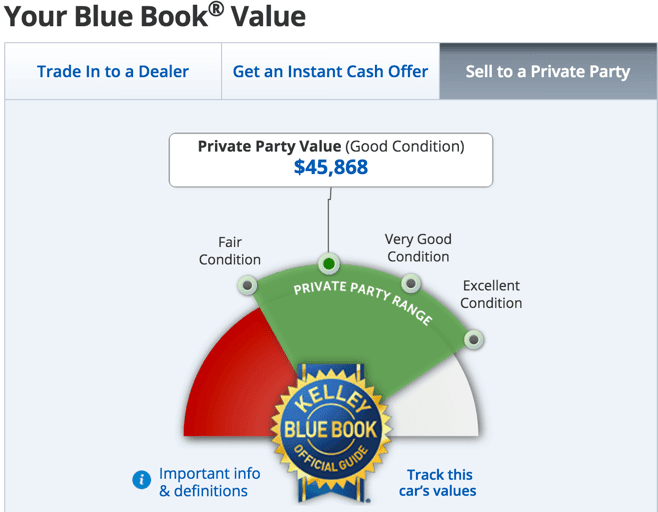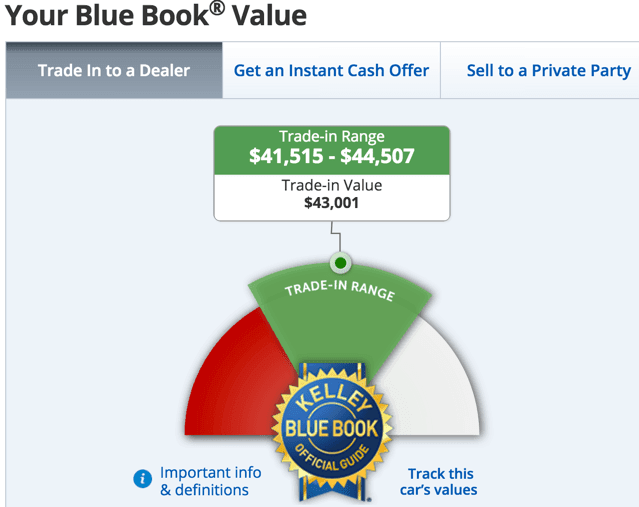
How to Sell Your Car Fast and For Top Dollar
Trading in your car at the dealer is guaranteed to lose you money. Yet many opt for this route because it’s easy. The better approach, however, is to sell your car yourself. You’ll get more money, and it’s easier than many think. Here’s how to sell your car fast and for top dollar.
In this guide, we’ll walk through the benefits of selling your car on your own. Then we’ll give you some practical tips on how to do it.
Why You Should Always Try to Sell Your Car Yourself First
Trading your car into a dealer when you purchase a new vehicle is quick and easy. That’s why so many people opt for this approaching to disposing of their car. Unfortunately, the dealer won’t give you the best price.
It also complicates the negotiations. With a trade-in, your must negotiate both the price of your new car and the value of your old car. Car dealers are experts at this process. You and I are not. By removing the trade-in negotiations, you greatly simplify the process.
By selling your car yourself, you can maximize the cash that you will receive. As an example, we valued a 2016 Volvo XC90. Using Kelley Blue Book, we compared the money we’d receive from a private party sale versus a deal trade in. The difference was almost $3,000.


Get the Estimated Value of Your Car
Since most of us aren’t car experts, you should get this information from a trusted third-party source. You can get an estimate from a dealer, but they may give you a lowball number under the assumption that you be trading the car in. What you actually want is what you can likely sell your car for.
Fortunately, there are online sources where you can get this information. Two of the best sources are Kelly Blue Book (which we used above) and Edmunds.com. You should also check used car buying sites such as AutoTrader and Craigslist.
In order to get the most accurate value of your vehicle on those sites, you need to be accurate in describing the details of the car. This will be particularly important in regard to the car’s overall condition since it can result in wide variations in value.
They will typically give you three values:
- Trade-in
- Dealer retail
- Private party
Dealer retail will be the highest. It is unlikely, however, you will be able to get that price. You aren’t a dealer and don’t have a dealer’s marketing power. Trade-in will be the lowest, but it’s not what you’re going for. A private party sale will be the most relevant number, as it is the price that you will most likely get for your car on direct sale.
Once you have this number, you should price your vehicle accordingly. Too high and you may not even get anyone to look at the car. But price it too low, and you’ll be losing money.
Get the Loan Information if You Still Owe Money on Your Car
There are two important pieces of information that you will need if you have a loan on your car:
- The payoff balance on your loan, and
- How to get the title to your car in the shortest timeframe possible.
The payoff balance will let you know how much cash you can expect to clear on the sale. Alternatively, it may show that you are under water and might have to write a check in order to close out the loan after the sale. You need to know this information to decide if selling your car is even the right option.
The title information is just as important. If you have a loan on your car, then the title to the vehicle is in the possession of the lender. The sale of the vehicle has to happen first so that you will have the cash to pay off the loan. But in order to complete the sale of the car, you’ll have to be able to deliver the title to the new owner.There will be a delay in this
There will be a delay in this process after the sale is completed. But you want to get information from the lender so as to keep that timeframe as short as possible.
Find out what the payoff process is, and what the best way to retrieve the title will be. That will likely require getting specific names and addresses, to make sure that all correspondence goes to the right party. You’ll also have to check and see what type documentation the lender will require for the payoff, in addition to the payment itself.
Where to Advertise Your Vehicle for Sale
There are plenty of ways to sell your car online. This can include Craigslist and AutoTrader.com, but you could also try eBay and even Facebook. Also, do email blasts to everyone on your email list who lives in your local area. Even if a direct recipient has no interest, they may forward the email on to someone they know whose looking for a car.
But you don’t have to rely just on online sources. Some of the more traditional advertising methods can work as well. Create a flyer that includes important information about the car, as well as two or three color photos of the vehicle. Post them on the bulletin board at work, at your house of worship, and in any public places that will allow it.
Accepting Payment Proceeds from the Buyer of Your Car
Payment is a specific issue when selling your car yourself, so you will have to take several precautions.
Never accept a personal check. In a worst-case scenario, the buyer can make off with your car, and you’re stuck with a bad check – and the bank fees that you will be charged for it. In that situation, legal action will be your only resort. And that may not work if the personal check you accepted turns out to be fraudulent. It happens in the real world, and not infrequently.
At a minimum, insist that the buyer pay by either certified check or a bank check. Keep in mind that cashier’s checks can be forged. As Teresa Dixon from the Cleveland Plain Dealer recently noted,
It used to be that getting a cashier’s check was a sure-fire way to avoid fraud. Not anymore. The fraudulent cashier’s checks out there fool the banks sometimes. I’ve dealt with cases in the last few years where even PNC and Huntington tellers accepted cashier’s checks that later ended up no good. Sometimes even the police can’t tell.
Better yet, hold the closing of the sale at the buyer’s bank – the same one that the check is drawn on. That should enable you to verify that the funds are available in the buyer’s account.
If the buyer is using a loan to purchase your vehicle, hold the closing at the lending bank. That will enable you to get a bank employee involved in the process. If the new lender is not a local bank, hold the closing at your bank, and ask your bank to verify the authenticity of the check from the buyer’s lender.
None of this guarantees that you won’t get stiffed on the payment, but it does lower the chances considerably.
Selling Your Car Yourself – Keeping it Legal
There will be several steps on the legal side of the sale.
Bill of sale.You will need to prepare a bill of sale in order to complete the sales transaction. Google “automotive bill of sale” for your state in order to get an acceptable form, then complete it with all of the relevant information. The bill of sale will be important if there is an existing loan on your car, and you will not be able to produce the car title immediately.
Temporary operating permit. The buyer can use the bill of sale to obtain this permit from the state department of motor vehicles (DMV). This will allow the buyer to operate the vehicle until the title can be delivered. Receipt of the title can take anywhere from a few days to two or three weeks, so this is an important step for the buyer.
Release of liability. This is a document that is available on your state DMV website. It will confirm the sale of the vehicle. Don’t skip this step! Completing and filing this form with the DMV will release you of liability on the vehicle. File it immediately after the sale to avoid potential problems. The form will likely require the odometer reading at the time of sale. Contact your state DMV to get specific information about this form.
Pay required transfer fees. You can find out what these are from the DMV. This can include sales tax if your state charges it on auto sales. You will want to pay them immediately after the sale since that is when you will have the cash to do so. But in addition, the payment of fees will represent additional confirmation of the transfer of the vehicle, and therefore the release of your liability.
Don’t forget to remove the license plates! The license plates run with the owner, not with the car itself. As well, you could probably transfer the plates to your next vehicle. The buyer will have to work out the license plate situation immediately after the sale.
Though the process of selling your car yourself seems complicated, remember that it can result in your getting thousands more than what you will get by trading it into the dealer. In the end, it will almost certainly be worth the extra effort on your part.


Article comments
Hi Everyone, I’m just putting some feelers out there to see if there’s anyone interested in making a pretty substantial amount of cash in a short amount of time. Only thing this requires is that you have an active bank account or credit card. No cash is required up front to start this. Which means your account can be on a zero balance and that’s completely fine. Text +1(314) 856 1730, lets talk about the next deal
Regarding the plates, it depends on what state you live in. In California, the plates stay with with car.